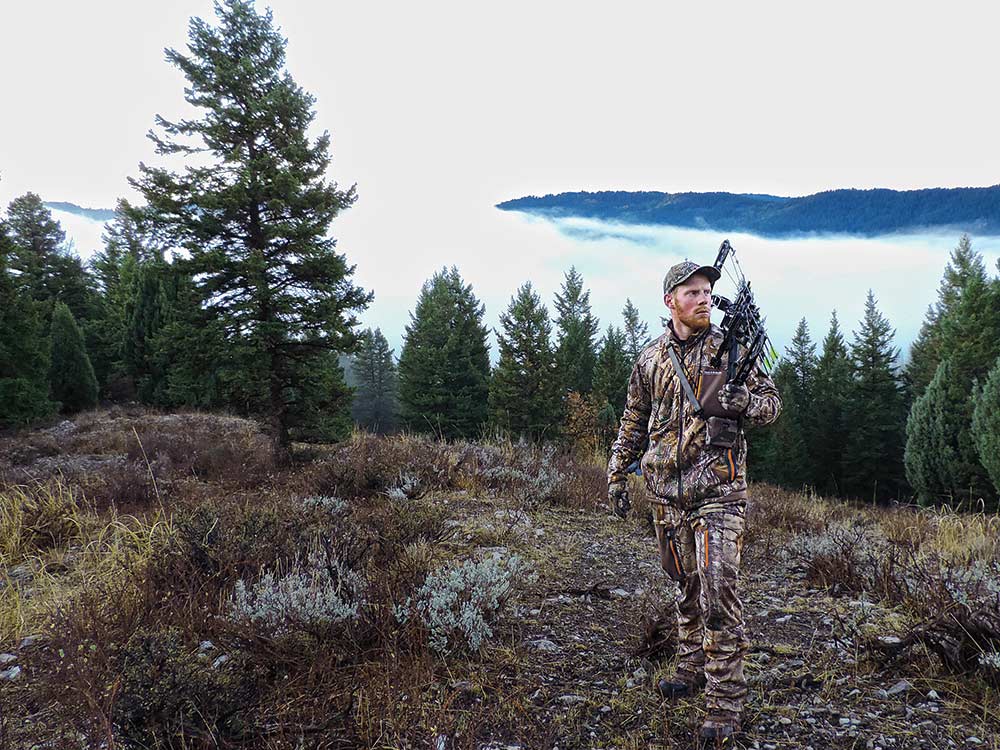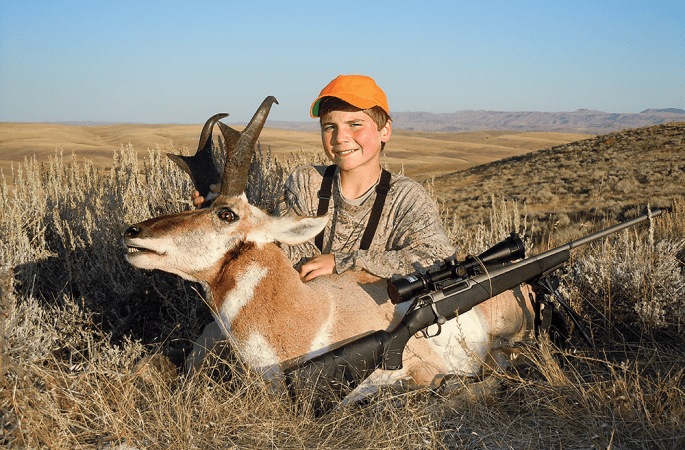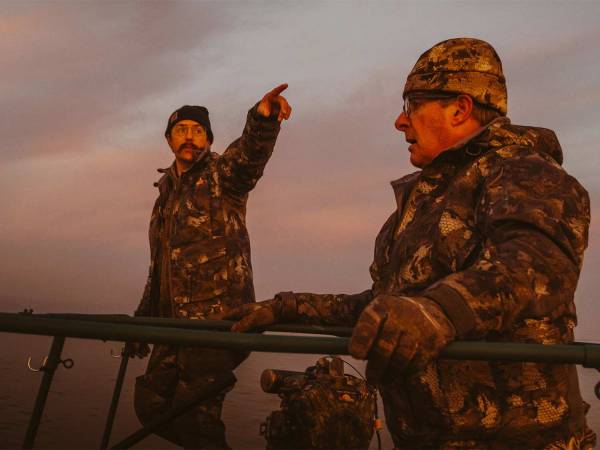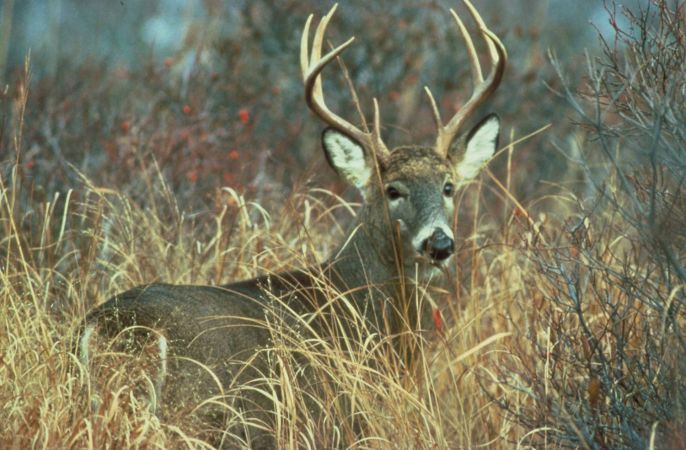With creative planning and realistic expectations, you can hunt five North American big-game species for less than $2,000 each. Here’s how.
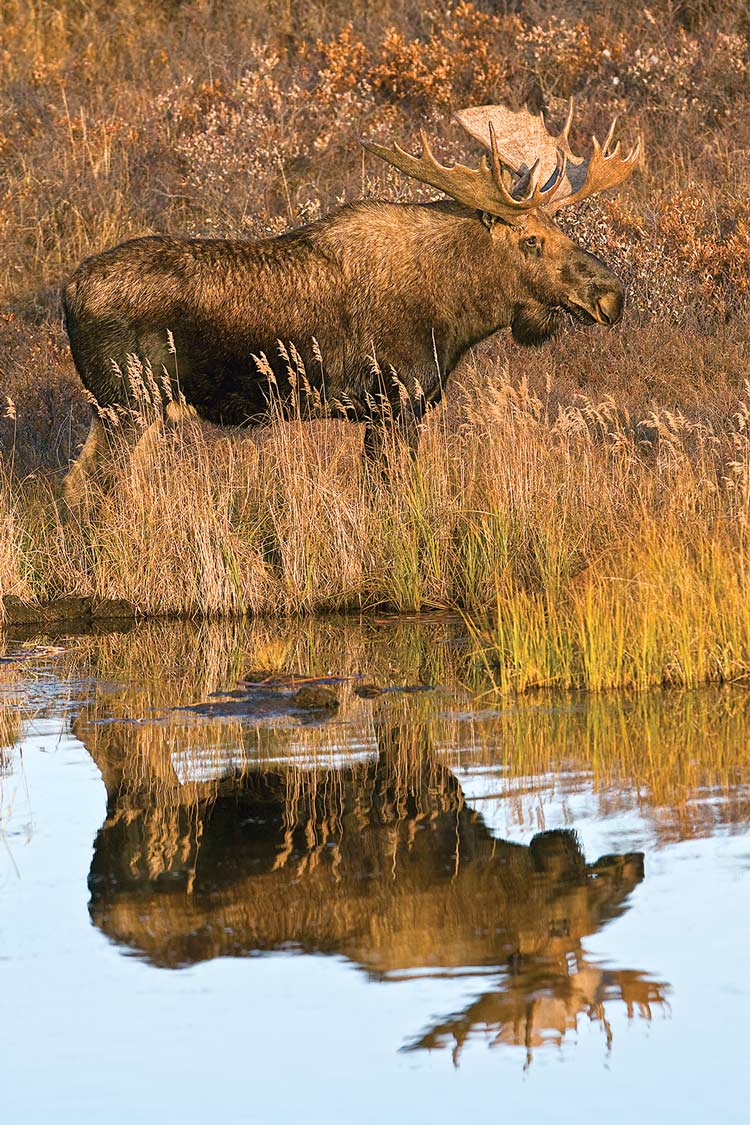
Hunt #1: Alaska Moose
A moose hunt for under $2,000 is impossible, right? Wrong. Be flexible on antler size and hunt the Last Frontier.
Locations/Habitat:
Fairbanks: Urban with flats, rolling hills, and low-lying bogs and swamps
Food Sources:
Willow and alder browse, and grasses
Where to Hunt:
Fairbanks Management Area, national and state forest
Strategy:
If you’re looking to tag any legal bull, lace up your boots. When you spot one, stalk it. Make your shot count, because you don’t want your moose expiring in someone’s backyard. Get off the road and be prepared for a serious workout if you want to take a larger bull.
Budget Breakdown:
- Flight (Minneapolis to Fairbanks, including baggage): $550
- Economy rental car, including fuel: $300
- Camping on state lands: $0
- Food (10 days at $15/day): $150
- Moose tag and annual hunting license: $960
- Total: $1,960
Money-Saver Tip: You’ll need to stash a little extra cash for this trip because moose are heavy critters. The most cost-effective method for getting all that meat home? Process it on your own. Find a way to freeze it and then pack and ship it home overnight via FedEx or UPS. It won’t be cheap, but it will almost certainly be less than the baggage fees at the airport.
Licensing: Alaska Department of Fish and Game
Hunt #2: Idaho Elk
Idaho isn’t Arizona. Still, I hunt it often because it has solid elk numbers and good bulls with first-come, first-served, over-the-counter tags—and no shortage of areas to explore.
Locations/Habitat:
- Sawtooth National Forest: More than 2 million acres of pine forest, meadows, and quaking aspen; moderate foothills to vertical canyons
- Caribou-Targhee National Forest: 3 million acres
Food Sources:
Browse, grasses, and ag fields on adjacent private lands
Where to Hunt:
National forests, state forests, private lands enrolled in the Access Yes! program
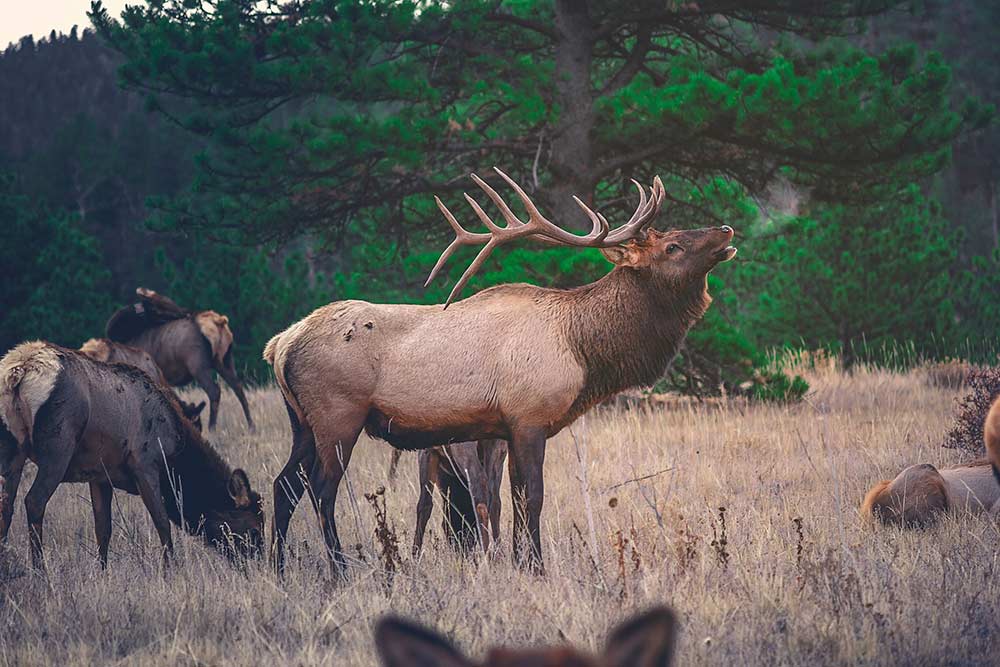
Strategy:
Keep your GPS handy and consider hiking deep into remote drainages. Bulls here respond well in the dark, not so much during daylight. Locate a bull and reach him by daybreak, then dog him until you kill him or he disappears, checking wind constantly. Cow-call sparingly. During midday or afternoon, monitor wallows, water holes, or seeps.
Lodging:
Primitive camping is allowed at no cost in most national forests.
Budget Breakdown:
- Fuel (15 mpg vehicle at $2.50/gal. for 3,500 total miles): $585
- Camping in national forest: $0
- Food (10 days at $25/day): $250
- Elk tag, hunting license, archery permit: $591.50
- Meat processing: 300 lb. at $.95/lb.: $285
- Total: $1,711.50
Money-Saver Tip: Store meat in a cooler with dry ice and process it yourself when you get home.
Licensing: Idaho Department of Fish and Game
Hunt #3: Nebraska Whitetails
Nebraska borders the whitetail wonderlands of Iowa and Kansas, but has two big distinctions: Tags are sold over the counter and are about half the price. Public-land hunting opportunities abound statewide.
Locations/Habitat:
- Eastern Nebraska: Lightly wooded rolling hills and bluffs
- Southern Nebraska: Prairies and river bottoms
- Sandhills: Rolling hills with drainages, cedars, and occasional cottonwood stands
- Pine Ridge: Ponderosa pines amid rolling to vertical terrain
Food Sources:
Corn, beans, acorns, and alfalfa
Where to Hunt:
State parks, state wildlife management areas, national forests, national grasslands
Strategy:
With a September 1 opener, Nebraska offers a shot at velvet whitetails. Hunt staging areas near hoof-pounded food and/or water sources.
As the rut draws near, exploit river-bottom funnels to intercept cruising bucks. Late in the season, deer will be back on the food sources to recover from the rigors of the rut and build up reserves for the upcoming winter. Take a stand and wait them out.
Budget Breakdown:
- Fuel (15 mpg vehicle at $2.50/gal. for 1,700 total miles): $285
- Lodging (7 nights at $50/night: $350
- Food (7 days at $20/day): $140
- Deer license and habitat stamp: $267
- Total: $1,042
Money-Saver Tip: Camp out in warmer weather for $0–$10 per night and save $280–$350.
Licensing: Nebraska Game Parks
Hunt #4: South Dakota Mule Deer
Solid muley bucks certainly exist in South Dakota, and there is abundant public land, relatively light hunting pressure, reliable populations, and decent trophy potential.
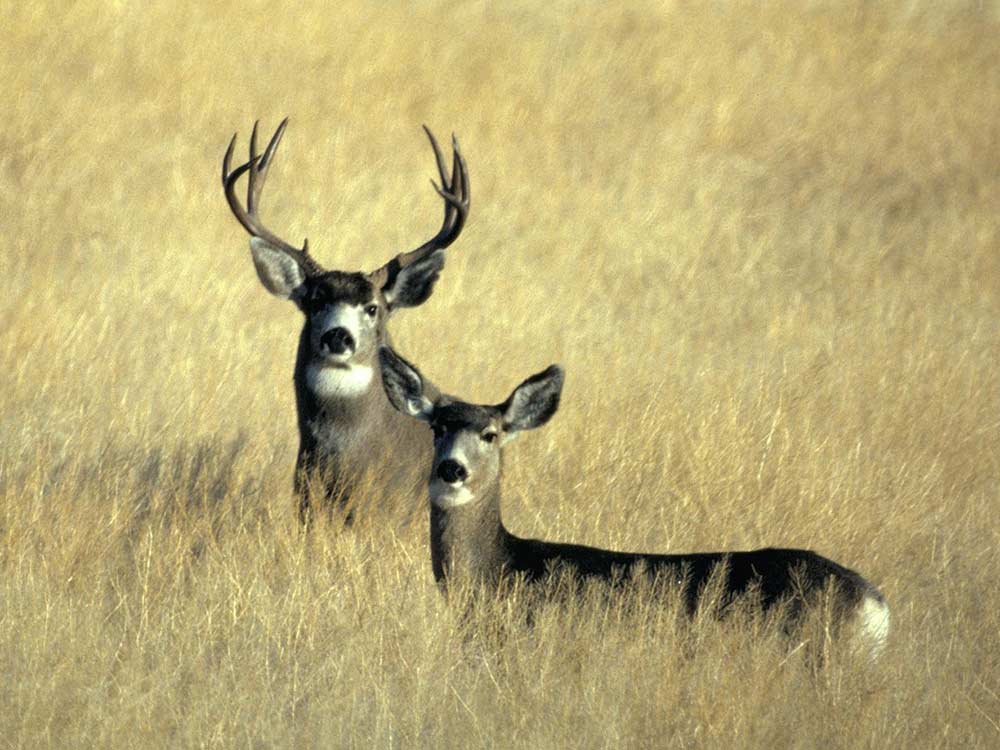
Locations/Habitat:
- Missouri River Breaks: Deep, brushy canyons and steep, cedar-dotted hills
- Badlands: Rock formations, deep canyons, and sprawling grasslands
- Black Hills: Ponderosa pines and steep canyons bordered by gentle hills, ag, and coulees
- Northwest South Dakota: Pine forests and rolling, sage-dotted prairies
Food Sources:
Corn, grasses, alfalfa, and sunflowers
Where to Hunt:
Gaining access to private land is feasible (sometimes with a small trespass fee); private lands enrolled in the state’s Walk-In Area program; Black Hills National Forest; Buffalo Gap National Grassland; Custer National Forest; state game production areas
Strategy:
I’ve arrowed three mature South Dakota bucks—one on public land—in November. The common denominator? The rut gets wild, and mature bucks sometimes forsake all common sense. Watch the wind, but hunt aggressively. Use a silhouette decoy to draw a buck in close.
Budget Breakdown:
- Fuel (15 mpg vehicle at $2.50/gal. for 1,700 total miles): $285
- Lodging (7 nights at $60/night): $420
- Food (7 days at $20/day): $140
- Deer license: $286
- Private land trespass fee: $500
- Total: $1,631
Money-Saver Tip:Tent camping opportunities are available.
Licensing: South Dakota Game, Fish & Parks
Read Next: Ultimate Bucket List: The 10 North American Hunts You Must Try Before You Die
Hunt #5: Wyoming Antelope
Nowhere else will you see so many speed goats. If you’re new to Western hunting or love antelope steaks as much as I do, Wyoming is the place to be.

Locations/Habitat:
Lusk/Gillette/Casper: Flat, as well as rolling prairies dotted with sage and occasional drainages
Food Sources:
Forbs, grasses, alfalfa, and sagebrush
Where to Hunt:
State land, Walk-In Areas, BLM land, Hunter/Landowner Assistance Program

Strategy:
Consider accumulating one or more preference points before trying for a tag. If you don’t draw, check for leftover tags for a unit with less public land and lower trophy potential but still plenty of goats. In hot weather, focus on water and alfalfa fields. If that doesn’t work, spot-and-stalk a buck. In late September, deploy a decoy.
Budget Breakdown:
- Fuel (15 mpg vehicle at $2.50/gal. for 3,050 total miles): $510
- Lodging (7 nights at $18/night in a campground): $126
- Food (7 days at $20/day): $140
- Application fee, hunting license, archery license and conservation stamp: $328.50
- Total: $1,104.50
Money-Saver Tip: Food costs can add up quickly. Save cash by preparing meals at home and freezing them for easy, inexpensive dinners. And don’t overlook the standbys of PB&Js, ramen noodles, or canned tuna.
Licensing: Wyoming Game & Fish Department
Author’s note: Costs will vary based on actual mileage or changes in fuel costs, flight rates, etc. ––Darron McDougal
The Best Budget Gear for Your Hunt
There’s no shortage of cheap choices on the market, but you don’t want to bet your whole hunt on crappy gear. Avoid the temptation to go full-Scrooge, and instead invest in durable—yet affordable—gear that will survive your hunt and prove useful on the next dozen to come. Spend some time bargain and second-hand shopping. If you plan to buy new items, skip new-for-this-year offerings and look for last year’s model. The performance difference is usually minimal, but the savings are often substantial.
With that in mind, here are a few of our favorite cost-conscious picks.
1. Rifle: CVA Cascade
Price: $557
This straightforward centerfire offers everything you need in a big-game rifle with minimal fuss. The synthetic stock is suitable for harsh conditions, and the rifle includes extra touches like a threaded muzzle, an extra swivel stud for a bipod, and good texturing for better handling. Best of all is its sub-MOA accuracy: Our testers printed an average group size of .841 inch with the Cascade. The rifle is currently available in three short-action calibers (6.5 Creedmoor, 7mm-08 Rem. and .308 Win.) with long-action options available in 2020.
2. Shotgun: Stoeger P3000 Pump
Price: $250
Stoeger’s shotguns aren’t known for their frills, and that’s exactly the point. This bare-bones pump is a workhorse that previously earned our Great Buy award You can take it anywhere, beat the hell out of it, and keep hunting—all for a couple hundred bucks.
3. Binoculars: Maven C.1 8×42
Price: $325
Another of our Great Buys, these handy 8x42s from Maven are a steal for the price. The direct-to-consumer company managed to shave cost by swapping some premium materials for more budget-friendly options (a polymer frame and glass sourced from the Philippines rather than Japan). But the C.1 still maintains a bright, sharp sight picture, and is a smart investment for more productive hunting.
4. Tent: REI Co-op Passage 2
Price: $159
You might consider REI a haven for hippies, but don’t let that fool you. Their in-house brand is the real deal, and usually the cheapest option among similar offerings from other name brands. Not only can their gear take a beating, but REI has a killer return policy in case something does malfunction. Their tents in particular are durable, and this 2-person backpacker is no exception. Best of all, it costs as much as two nights in a motel and lasts way longer.
5. Knife: Ka-Bar Dozier Folder
Price: $19
This folder is one of my favorites, thanks to a tip from our hunting editor, Andrew McKean. It’s a basic blade, but I’ve bought half a dozen over the years simply because they’re less than $20, lightweight, and get the job done several times over before they needed resharpening. You can certainly use the Dozier for big tasks like quartering or field dressing, but you’ll most likely end up sliding one into your pocket and tossing an extra in your glove box for daily tasks. ––Natalie Krebs
